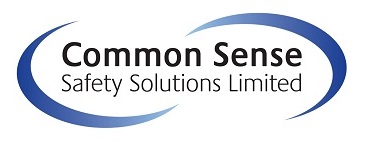Title Page
-
Name of Auditor
-
Contact Name
-
Contact Adress of Site being audited
-
Contact telephone number
-
Contact Email
-
Date Completed
-
Number of staff onsite
Section 1 Health & Safety Policy
-
1. Is there a written health and safety policy in place?
-
2. Does the policy contain a statement, organisation (including individual responsibilities) and arrangements?
-
3. Has the policy been signed and dated (within 12 months) by the person responsible for the overall health and safety of the workforce?
-
4. Has the workforce been briefed on the contents of the policy?
-
5. Is there a signed record of the entire workforce to acknowledge a receipt and understanding of the policy?
-
6. Can the workforce access the company policy?
-
7. Is the Health & Safety Law poster on display in a prominent position? Is it completed correctly?
-
8. Is a copy of the company’s Employee Liability insurance certificate on display in a prominent position?
Section 2 Organisation:
-
1. Does the company have a competent person who advises on Health & Safety?
-
2. Does the company have an organisational chart? Is the person identified within the chart?
-
3. Are Managers and supervisors, who have responsibilities for health & safety matters, been made aware of their responsibilities, duties accountabilities and reporting lines?
-
4. Are safety objectives, targets and training profiles included into all staff’s annual appraisals?
-
5. Have individuals been selected to react in an emergency i.e., fire wardens and first aiders?
Section 3 Health & Safety Planning
-
1. Is there a H&S plan to ensure continuous improvement in health & Safety?
-
2. Has the plan been brought to the attention of those on site – managers, workforce, contractors, etc?
-
3. Do individuals who have responsibilities, as defined by the plan, been given agreed time scales to action these requirements?
-
4. Is the H&S plan reviewed on a regular basis?
-
5. Is the site SHE performance measured against an appropriate set of key performance indicators?
-
6. Have foreseeable emergencies been identified and suitable site emergency plans/procedures been developed?
-
7. Are there effective arrangements for keeping the emergency plan up to date?
-
8. Are there adequate arrangements and resources for implementing the site emergency plan?
-
9. Is there a system for recording and controlling access and egress to the site?
-
10. Has an SHE filing system been set up?
-
11. Is the company able to keep up to date with changes in SHE legislation?
Section 4a Selection and Training
-
1. Is there a system in place to check and ensure the competence of new starters?
-
2. Are all new employees medically assessed?
-
3. Are all new employees given a “basic safety” induction course?
-
4. Are needs of:<br>- Young persons (under 18)<br>- Pregnant or nursing mothers<br>- Disabled Persons<br>Considered?
-
5. Are measures in place to ensure that an ongoing health & safety training needs analysis is undertaken for all staff?
-
6. Are specialist health & safety training programmes in place for:<br>- First aid<br>- Fire<br>- Manual Handling<br>- COSHH<br>- DSE Assessor<br>- Asbestos
-
7. Are training records up to date and reviewed on a regular basis? (A copy of the training records should be available for the safety inspection)
-
8. Are attendance records and certificates kept for all training attended?
-
9. Is on the job training recorded?
-
10. Are driving licences checked annually for any penalties or restrictions for staff who drive on work related business and claim business mileage?
Section 4b Consultation, Communication and Control
-
1. What arrangements are in existence for consultation between management and employees on activities that affect their health & safety?
-
2. Is there a health & safety committee to discuss routine safety issues?
-
3. Is the health & safety committee comprised of a cross section of the workforce?
-
4. Does the committee meet at least on a quarterly basis?
-
5. Is a pre-circulated agenda produced prior to the meeting being held?
-
6. Are actions minutes – responsibilities/time scales produced and widely circulated?
-
7. Are posters, bulletins and articles used to help communicate the message of Health & Safety?
-
8. Are sufficient Health & Safety notice boards made available and regularly maintained and updated?
-
9. Is relevant information from other sources – HSE, Client, Trade Union – made available on the board?
-
10. Do frequent team briefings take place? Do they include safety/risk analysis and open discussion?
-
11. Are suitable signs erected in accordance with safety signs regulations 1996?
-
12. Do safe working procedures exist for activities that are carried out on a frequent basis and have a potential for harm? Can operators access these procedures?
-
13. Is there a suitable permit system in place to control maintenance/contractor operations and other potentially hazardous work?
Section 4c General Risk Assessments
-
1. Is there a documented procedure for conducting risk assessments?
-
2. Is the workforce aware of this procedure?
-
3. Have the people responsible for conducting risk assessments, attended a risk assessors training course?
-
4. Has an inventory been compiled of areas/activities for risk assessments?
-
5. Is information entered on the risk assessments accurate and a true reflection of work activity?<br>5 risk assessment sheets will be requested and reviewed at random during the course of the inspection."
-
6. Has the organisation identified its “key” risks?<br>Lone working/security
-
7. Are third parties’ involvement of public/visitors/contractors been considered?
-
8. Are the assessments reviewed on a regular basis by management? (minimum annually)
-
9. Do supervisors monitor and review changes to risk assessments on a regular basis?
-
10. Are procedures in place to implement changes to risk assessments and supporting documentation and reinstruct/train effected personnel?
-
11. Is the workforce aware of risk information?
Section 4d COSHH Assessments
-
1. Is there a documented procedure for conducting COSHH assessments?
-
2. Is the workforce aware of this procedure?
-
3. Have the people responsible for conducting COSHH assessments attended a COSHH assessors training course?
-
4. Does an inventory/COSHH index exist for all chemicals used onsite?
-
5. Are MSDs available for ALL substances used onsite?
-
6. Is the information entered on the COSHH assessments accurate and a true reflection of work activity?<br>5 COSHH assessments sheets will be requested and reviewed.
-
At random during the course of the inspection.
-
7. Are the assessments reviewed on a regular basis by management? (minimum annually)
-
8. Are procedure in place to implement changes to COSHH assessments and supporting documentation and reinstruct/trin effected personnel?
-
9. Is the workforce aware of risk information?
-
10. Does the organisation have a “Drug and Alcohol” policy?
Section 4e Manual Handling Assessments
-
1. Is there a documented procedure for conducting manual handling assessments?
-
2. Is the workforce aware of this procedure?
-
3. Have the people responsible for conducting manual handling assessments, attended a manual handling assessors training course?
-
4. Is there an inventory/manual handling index for all manual tasks undertaken by the company?
-
5. Is the information entered on the manual handling assessment accurate and a true reflection of work activity?<br>5 manual handling assessment sheets will be requested and reviewed at random during the course of the inspection
-
6. Are the assessments reviewed on a regular basis by management? (minimum annually)
-
7. Are procedures in place to implement changes to manual handling assessments and supporting documentation and reinstruct/train effected personnel?
-
8. Is the workforce aware of the risk information?
Section 4f DSE Assessments
-
1. Have DSE workstation assessments been undertaken by a “competent” person?
-
2. Are written DSE assessments kept up to date and held?
-
3. Are DSE assessments reviewed at least on an annual basis?
-
4. Are DSE workstations equipped to meet essential safety requirements?
-
5. Are all members of the workforce aware of the requirement to report to their line manager any potential RSI/WRULD type symptoms?
-
6. How many cases of RSI/WRULD have been reported within the last 3 years?
Section 4g Workplace Safety
-
1. Are suitable and sufficient fire notices in place?
-
2. Are fire exits clearly signed?
-
3. Are appropriate fire extinguishers present and are these mounted and suitably signed?
-
4. Are appropriate fire detection and warning systems in place?
-
5. Does a competent person check extinguishers, fire detection and warning systems on a regular basis?
-
6. Have all staff members undertaken (biennial) fire extinguisher training?
-
7. Is there a suitably appointed person (plus deputy) to make head counts in an emergency situation?
-
8. Are fire evacuation drills conducted (minimum 6 monthly basis) and recorded?
-
9. Have suitable emergency assemble points been identified?
-
10. Is all information relating to the fire safety kept together in a single location for audit/inspection purposes? Site fire file etc
-
11. Have Fire Risk Assessment FRA been completed?
-
12. Is the name of the person with the ultimate responsibility for fire safety displayed within the premises?
First Aid
-
1. Have suitable numbers of trained first aiders been appointed for the working areas?
-
2. Are details of the first aiders posted on the safety notice boards and drawn to the attention of workforce and visitors/guests?
-
3. Are suitable first aid boxes and equipment available and mounted at strategic positions around the working areas?
-
4. Are first aid boxes checked on a regular basis to ensure contents are suitable and sufficient?
-
5. Are emergency contact numbers and instructions on what to do in the event of an emergency published on the safety notice board?
-
6. Is an accident book in place to record accidents and first aid treatment? Does it meet the requirements of the DPA?
Work Equipment
-
1. Has PAT testing been carried out for all electrical equipment? Are suitable records in place?
-
2. Has PAT test been carried out by a competent person? Are suitable records in place?
-
3. Does the equipment supplied on a lease basis by any hire company have the relevant certification of conformity?
-
4. Is there a suitable log in existence to report any defective equipment?
-
5. Are the workforce suitably trained and instructed in the safe use of plant/equipment?
-
6. Are staff competent to drive company vehicles? Are licences checked on a regular basis?
-
7. Can all equipment be electrically isolated?
-
8. Are all electrical cords, plugs, switches etc in a safe condition and is cabling managed effectively?
-
9. Is all work equipment part of a planned maintenance schedule?
-
10. Has all lifting gear/equipment been identified and part of an adequate inspection schedule?
-
11. Hall all ladders/steps and access platforms been identified and part of an adequate inspection schedule?
-
12. Have all pressure vessels been identified and part of a adequate inspection schedule?
-
13. Does a register exist to monitor the issue of PPE?<br>Is this completed at least annually?<br>PPE issue register.
Workplace
-
1. Does the working area afford adequate lighting, heating, ventilation and humidity control?
-
2. Do workforce know how and where to report any complaints associate with working conditions?
-
3. Are areas of access and egress (particularly fire evacuation routes) free from any debris, obstructions etc?
-
4. Are these areas inspected and tidied on a regular basis by nominated members of the workforce?
-
5. Are there adequate welfare facilities available to all the workforce (toilets, potable or bottled water), restrooms etc?
-
6. Does the organisation have a clear no smoking policy?
-
7. Are there suitable smoking areas available?
-
8. How many of the workforce has complained about their working conditions in the past quarter? How are their concerns raised?
-
9. Has a noise assessment of the workplace been completed?
-
10. Has an asbestos survey been completed? Is a register available for inspection?
-
11. Have all confined spaces been identified on site?
-
12. Physical evaluation of workshop.
-
13. Physical evaluation of production site.
-
14. Physical evaluation of the office
-
15. Is there a clear unambiguous demarcation of zones?
-
16. Have traffic routes been suitably identified and are they maintained?
Section 5 Monitoring
-
1. Are safety inspections conducted in the workplace on a regular basis? (minimum monthly)
-
2. Are these inspections carried out by a competent person?
-
3. Are logs/records kept of any significant findings and are they available for inspection?
-
4. Is there a system in place to track actions specified as a result of these inspections?
-
5. Are the findings made known to any senior managers etc?
-
6. Is there a policy/procedure for medical screening/surveillance?
-
7. Are waste transfer notes retained for all waste that is disposed of via registered waste carriers?
-
8. Does the organisation transport waste material? Is it registered with the EA?
-
9. Does the company need to register under the “Hazardous Waste Regulations”?
-
10. Is there a system for analysing data from accidents/incidents and near misses?
-
11. Are staff members aware of the accident/incident reporting procedures and have access to the appropriate forms/systems for reporting?
-
12. Are staff members aware of the hazard/near miss reporting [procedure and have access to the appropriate forms/systems for reporting?
-
13. How is it ensured that lessons learnt from accidents/incidents investigations and hazard/near misses are acted fully upon?
Sign-off
-
Auditors’ Signature:
-
Auditors’ comments:



















